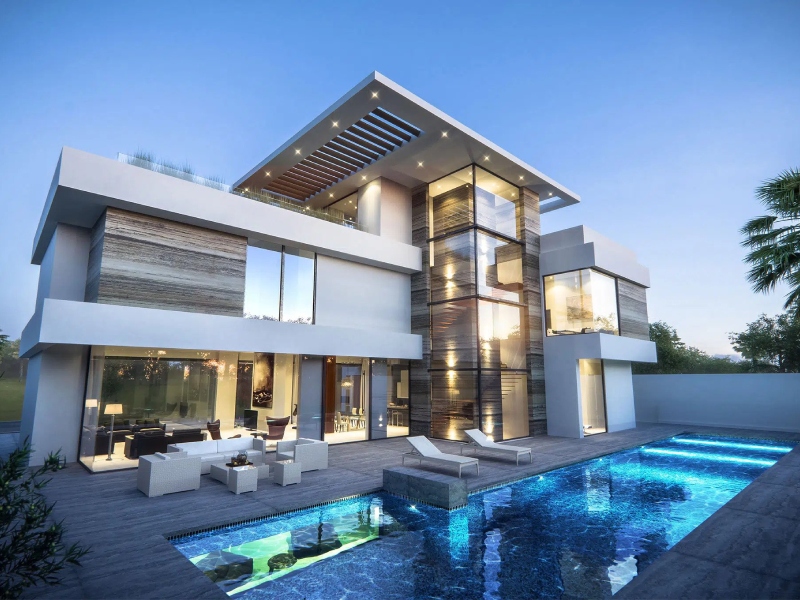Landscaping for Hotels and Villas: Market Challenges
Landscaping and interior design for hotels and villas play a crucial role in attracting customers and providing them with a unique experience. Choosing high-quality materials for landscaping not only enhances the beauty and functionality of these spaces but also increases their economic value and appeal. This article delves into the production process of landscaping materials, their types and characteristics, export opportunities, and the challenges in domestic and international markets.
Production Process of Landscaping Materials
- Flooring:
-Wood: Natural wood is cut and prepared, then turned into planks for flooring. These planks undergo processes such as sanding, staining, and final coating to be ready for use.
– Ceramic: Clay and other minerals are extracted, mixed, pressed, and then fired at high temperatures in kilns. After firing, the ceramics are glazed and ready for installation.
- Wall Coverings:
– Wallpaper: High-quality paper is printed with various patterns and designs, then coated with moisture and light-resistant finishes.
– Wood and Plastic Panels: Wood or plastic is processed through cutting, molding, and coating to create panels for wall coverings.
- Furniture and Decorations:
– Wooden Furniture: Natural wood is cut and prepared into various parts, which are then assembled, sanded, and painted to create finished furniture products.
– Metal Furniture: Metals are cut, bent, and welded into various parts of metal furniture, then painted and coated for durability and aesthetic appeal.
Types and Characteristics of Landscaping Materials
- Flooring:
– Wood Flooring: Beautiful, warm, and natural, suitable for luxurious and cozy spaces.
– Ceramic Flooring: Resistant to moisture and wear, ideal for high-traffic and wet areas.
- Wall Coverings:
– Wallpaper: Variety in design and color, easy to replace, and capable of creating different atmospheres in a space.
– Wood and Plastic Panels: Durable, attractive, and capable of creating three-dimensional designs.
- Furniture and Decorations:
– Wooden Furniture: High durability, beautiful natural appearance, suitable for both classic and modern spaces.
– Metal Furniture: Sturdy and modern, suitable for industrial and contemporary designs.
Export of Landscaping Materials
Opportunities:
– Increasing Demand: Growth in the tourism industry and the construction of luxury hotels and villas worldwide.
– High Quality: Producing high-quality materials that meet international standards can open new markets for producers.
– Lower Production Costs: Lower production costs in some countries provide a competitive advantage in international markets.
Challenges:
– Compliance with Standards: Need to meet the varying standards and regulations of destination countries.
– Transportation Costs: High transportation costs and logistical challenges can affect the cost-effectiveness of exports.
– Intense Competition: Competing with large and well-known global producers.
Domestic Market Outlook
Opportunities:
– Growth in Construction Industry: Increase in projects for building luxury hotels and villas within the country.
– Innovation in Production: Utilizing new technologies and improving production processes can enhance quality and efficiency.
– Government Support: Supportive government policies for the development of the tourism and construction industries.
Challenges:
– Internal Competition: Intense competition among domestic producers can affect prices and profit margins.
– Quality and Standards: Maintaining and continuously improving product quality to meet customer satisfaction.
– Economic Fluctuations: Economic instability and changes in financial policies can impact the domestic market.
Landscaping hotels and villas with high-quality and suitable materials can create a unique and enjoyable experience for customers. By focusing on quality improvement, adhering to international standards, and enhancing production processes, producers can capitalize on opportunities in domestic and international markets. Despite the existing challenges, this industry has a high potential for growth and development and can become one of the main pillars of non-oil exports.

